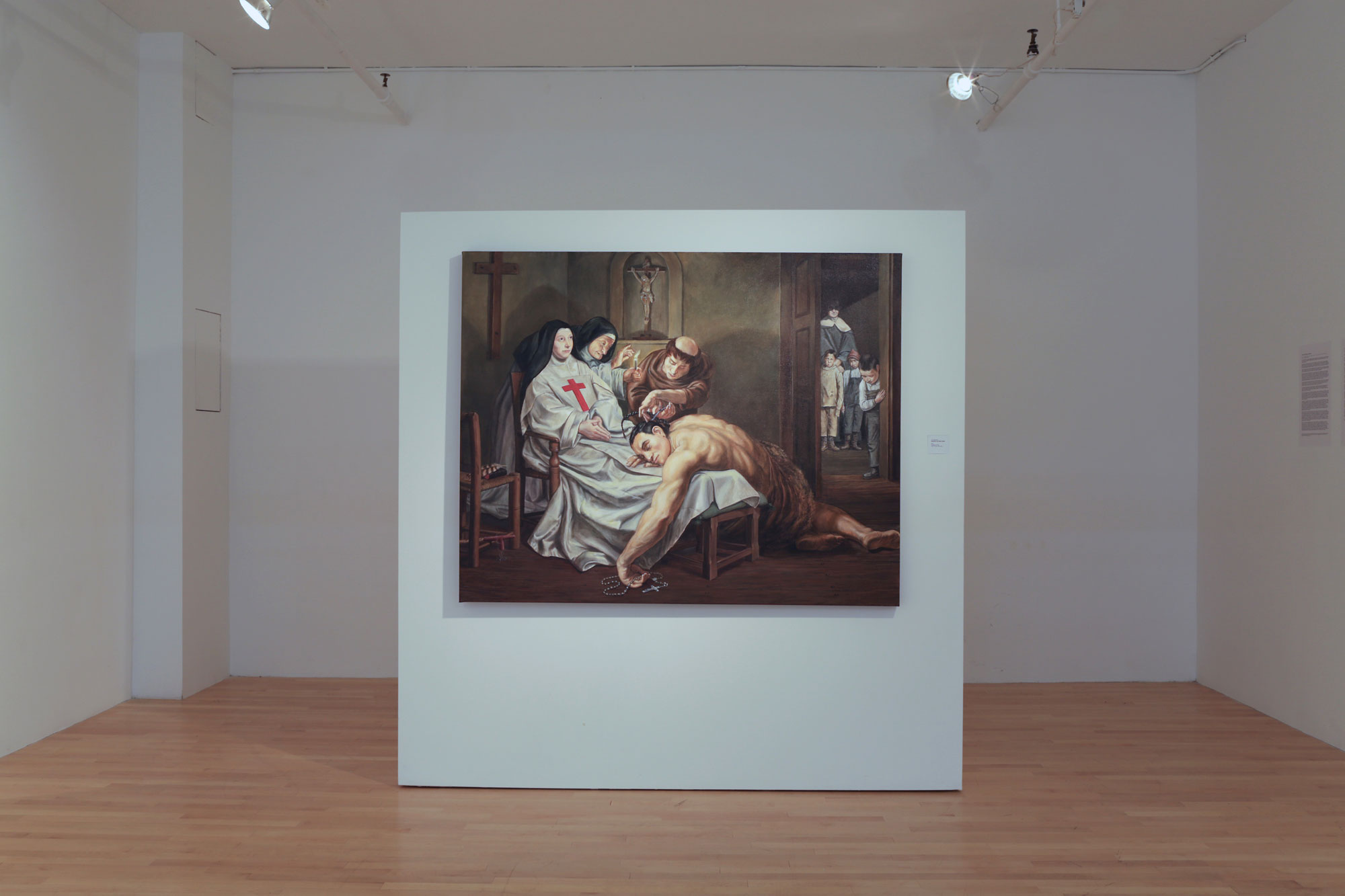The artists represented in No Homo: art, assistants and emulation are the four assistant artists for the renown Kent Monkman: Don Monkman, Brian Rideout, Rory Dean and Brad Tinmouth. This exhibition focuses on showing that these assistants are also artists in their own right, with their personal styles, techniques and interests.
Referring to the inner workings of Renaissance studios such as Raphael’s or Michealangelo’s, in his first curatorial work Kent Monkman acknowledges the need for assistants without whom he would not be able to answer all of the demands made to him. Assistants are essential to an artist studio, however it is sometimes forgotten that these assistants have artistic practices of their won. The display of art in this exhibition underlines these four talents. Their capacity to model Kent Monkman’s technique for example is a token to their artistic expertise when you consider the difference in style.
Don Monkman (brother of Kent Monkman) presents Nanabosho and Sister Delilah (2013): a large canvas appropriating images from Christian religion and art history. The large Aboriginal figure, the nun cutting of his hair, the organization of the surface is a reference to the painting Samson and Delilah by Peter Paul Rubens (ca, 1610). In Christian mythology, Samson was granted great strength by God, his only vulnerability residing in his hair (which contain his power) and seductive women. It is with irony and great artistic talent that Don Monkman parallels an Aboriginal deity to the great Samson and a nun to a treacherous woman. This painting challenges art history, Christian religion and colonization to mention only a few. Although I spent quite a long moment with this canvas, I look forward to seeing it again and discover yet another appropriation or level of meaning.
Brian Rideout‘s paintings shows his inclination towards working with planes of somber colors. The spaces he represents seem almost two-dimensional yet evocative through patterns, shadows and shapes. The four paintings by Rideout’s appear to be working together with a unity to the four canvases. Indeed all four paintings create a feeling of unease like the calm before a storm; wether it is the pale earth colors, the subject matter or the detail of a curtain rising from a light breeze.
Rory Dean‘s A Bitch Ex Gf (2013) is quite a sight: speckled with references of popular culture mingling with fantastic creatures and forms from his own imagination the canvas feels as in movement. Characters from TV shows like the Simpsons, popular music figures such as Rhianna and national sports (hockey) share the space with large rodents and smiling mountains. This very active painting gives the impression to be in constant motion, with details appearing at each viewing evoking different memories for every spectator. Dean’s work will pull you right into the artist’s imagination and interlace it with your own.
Brad Tinmouth‘s Greenhouse (2013) is an installation, the only none-painted piece of the exhibition. Based on a do it yourself philosophy Tinmouth’s art “aims to make everyone as happy as he is” (taken from curatorial statement). In this exhibition he built a small greenhouse: the visitors are invited to come in and watch, maybe participate in, the growth of comestible plants. My precarious knowledge of plants has identified basil and what could possibly be parsley among other herbs. The artists gives us a contact with nature and green spaces in a gallery setting and might also influence us to grow our own cooking herbs!
pfoac221, space 221
Don Monkman, Brad Tinmouth, Brian Rideout and Rory Dean
curated by Kent Monkman
No Homo
May 2 – June 8, 2013
www.pfoac.com



